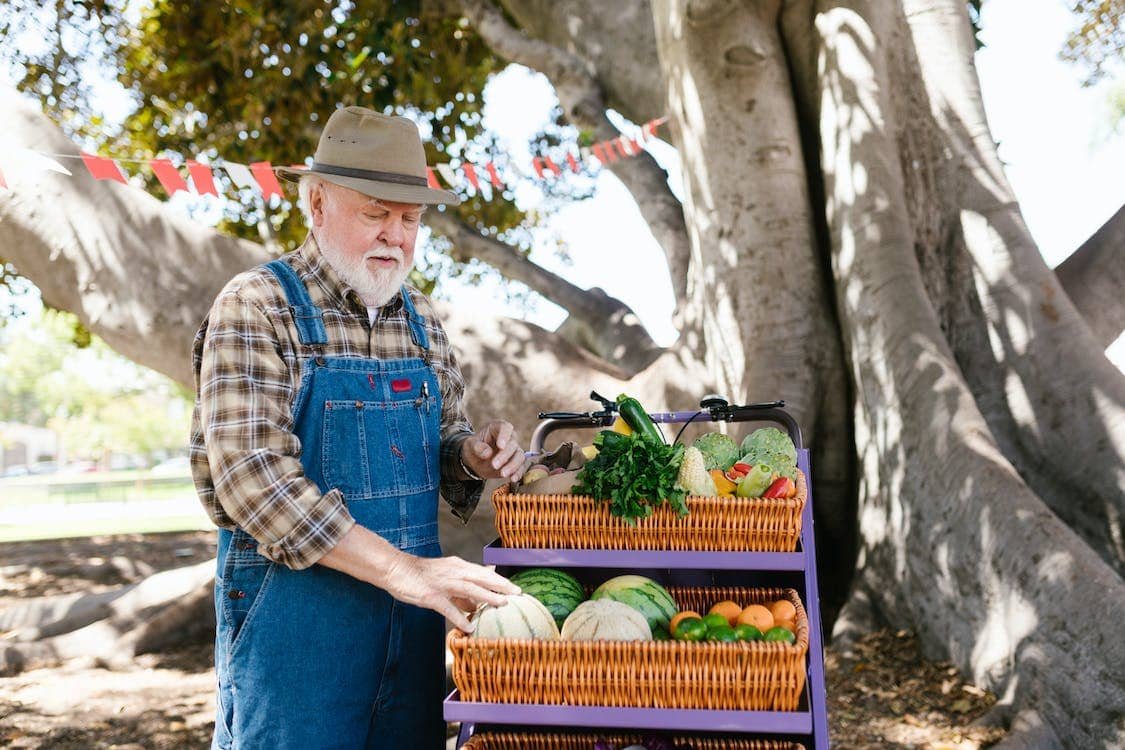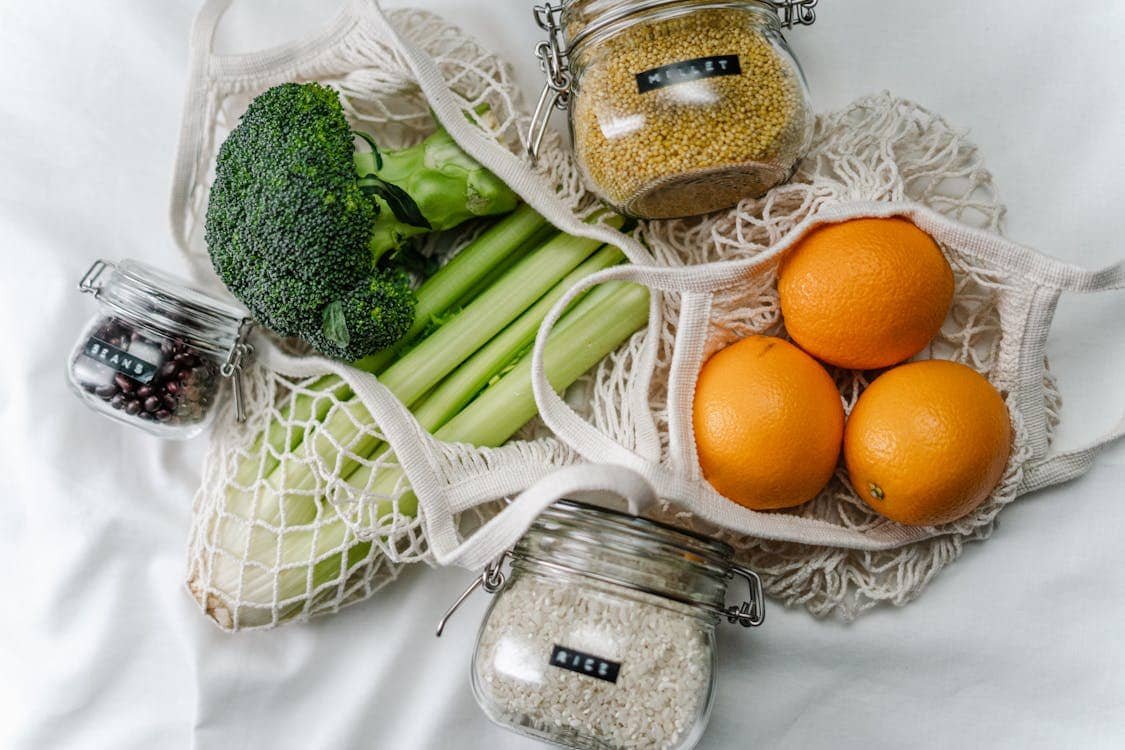**THIS IS NOT AN AFFILIATE MARKETING ARTICLE**
In today’s world, plastic has become an omnipresent material, but its convenience comes at a significant cost to the environment. From polluting oceans to harming wildlife, the consequences of plastic usage are far-reaching. However, by taking these 8 simple steps to minimize your plastic usage, we can all play a part in reducing plastic waste and creating a cleaner, greener future. Here are eight practical steps you can take to minimize your plastic usage:
1. Shop at Farmers Markets

Photo: RDNE Stock project
Supporting local farmers and reducing plastic packaging by shopping at farmers’ markets is a win-win for both the environment and your community. Unlike supermarkets, where produce is often wrapped in plastic or shipped from thousands of miles away, farmers’ markets offer fresh, locally grown food with minimal packaging. By buying directly from farmers, you can reduce your carbon footprint and support sustainable agricultural practices. Many farmer’s markets also offer a wide range of products beyond fresh produce, including bread, cheese, meat, and artisanal goods, making them a one-stop-shop for all your grocery needs.
2. Demand Reusable and Buy It for Life (BIFL) Products from Your Favorite Brands
In today’s throwaway culture, the concept of “Buy It for Life” (BIFL) has lost traction as a sustainable alternative to disposable consumerism. BIFL products are designed to last a lifetime, reducing the need for frequent replacements and minimizing waste. By advocating for BIFL options from your favorite companies, you can promote sustainability and invest in products that stand the test of time.
Begin by identifying companies that prioritize quality craftsmanship and durability in their products. Look for brands that offer warranties, repair services, or product guarantees, indicating their commitment to customer satisfaction and long-term use.
Reach out to these companies through social media, email, or customer service channels to express your interest in BIFL products. Share your appreciation for their dedication to quality and sustainability, and encourage them to expand their offerings to include items designed for lifelong use.
Highlight the benefits of BIFL products, such as reduced environmental impact, cost savings over time, and the satisfaction of owning well-made goods. Emphasize the importance of investing in products that are built to last, rather than contributing to the cycle of disposable consumption.
Support companies that prioritize BIFL products by purchasing from them and promoting their commitment to sustainability to your friends, family, and social networks. Show your loyalty and appreciation for businesses that value quality over quantity and encourage others to do the same.
Lead by example and incorporate BIFL products into your own lifestyle. Whether it’s investing in a durable backpack, a high-quality kitchen appliance, or a timeless piece of furniture, demonstrate the value of choosing products that are designed to last a lifetime.
By demanding reusable and BIFL products from your favorite brands, you can help drive a shift towards more sustainable consumption habits and inspire others to make conscious choices that benefit both individuals and the planet. Together, we can build a future where quality, durability, and sustainability are prioritized over short-term convenience.
3. Do Not Support Consumerism:
Consumerism, the relentless pursuit of acquiring goods and services, often at the expense of environmental sustainability, is a significant driver of plastic usage and waste. By challenging the culture of overconsumption and prioritizing mindful consumption habits, we can reduce our reliance on plastic products and minimize our environmental footprint.
Start by reassessing your relationship with material possessions and questioning the societal norms that equate happiness and success with the accumulation of stuff. Instead of seeking fulfillment through endless consumption, focus on experiences, relationships, and personal growth.
Practice mindful consumption by being intentional about the items you bring into your life. Before making a purchase, ask yourself if the item is truly necessary and if it aligns with your values and priorities. Consider the environmental and social impact of the product, as well as its longevity and durability.
Embrace minimalism as a lifestyle choice that prioritizes quality over quantity and fosters a sense of contentment with less. Declutter your living space and pare down your possessions to the essentials, freeing yourself from the burden of excess stuff and reducing your environmental footprint in the process.
Shift your mindset from a consumer mindset to a creator mindset by embracing DIY projects, upcycling, and repurposing materials. Instead of buying new items, explore ways to breathe new life into old ones and unleash your creativity in the process.
Support companies and brands that prioritize sustainability, ethical production practices, and transparency in their operations. Look for certifications such as Fair Trade, B Corp, or organic labeling, which indicate a commitment to social and environmental responsibility.
Engage in community-based initiatives that promote sharing, swapping, and collective ownership of resources. Participate in clothing swaps, tool libraries, community gardens, and other collaborative efforts that foster a sense of connection and reduce individual consumption.
By rejecting consumerism and embracing a more mindful and sustainable approach to consumption, we can reduce our reliance on plastic products and work towards a more equitable and regenerative future for all. Let’s prioritize experiences over possessions, relationships over transactions, and sustainability over endless growth.
4. Avoid Bottled Water for Real
Plastic water bottles have a devastating impact on the environment, from the resources used in their production to the pollution they cause when improperly disposed of.
In addition to the environmental consequences, bottled water is often more expensive and lower in quality than tap water and can really harm your bodies health.
Invest in a BPA-free reusable water bottle and fill it up with tap water or filtered water instead. Not only will you save money in the long run, but you’ll also help reduce the demand for single-use plastic bottles and protect our planet’s precious water resources.
5. Steer Clear of Plastic Straws (If You’re Able)
Plastic straws are among the top items found in beach cleanups and are harmful to marine life. Over 8 million tons of plastic enter the ocean every year, and plastic straws are a significant contributor to this pollution.
If you don’t need a straw, skip it. If you prefer using a straw, consider purchasing reusable alternatives like metal or bamboo straws that you can carry with you. Many restaurants and cafes are now phasing out plastic straws in favor of more sustainable options, but it’s essential to be proactive in reducing your plastic consumption as well.
6. Get Creative with Plastic-Free Alternatives
One of the most exciting aspects of reducing plastic usage is discovering creative alternatives that not only minimize waste but also add a touch of innovation to your daily life. By thinking outside the box and exploring unconventional solutions, you can find unique ways to eliminate plastic from your routines while expressing your creativity.
Start by assessing areas of your life where plastic usage is prevalent and brainstorming alternative solutions. For example, instead of using plastic wrap to store leftovers, consider investing in reusable beeswax wraps or silicone lids that can be washed and reused. These alternatives not only reduce plastic waste but also add a pop of color and personality to your kitchen.
Explore DIY projects and craft ideas that utilize natural materials and repurposed items. Upcycling old clothing into reusable shopping bags, creating artwork from discarded plastic bottles, or crafting household items from reclaimed wood are just a few examples of how you can transform waste into something beautiful and functional.
Challenge yourself to find plastic-free alternatives for everyday items, such as toothbrushes, food storage containers, and cleaning supplies. Get creative with materials like bamboo, glass, stainless steel, and natural fibers to replace disposable plastic products with more sustainable options.
Engage with your community and share your creativity with others. Host a plastic-free swap meet where friends and neighbors can exchange reusable items and share tips for reducing plastic waste. Organize a workshop or tutorial on DIY projects that promote sustainability and inspire others to embrace a plastic-free lifestyle.
Above all, have fun with the process and embrace the opportunity to unleash your creativity. Experiment with new ideas, learn from your experiences, and celebrate your successes, no matter how small. By approaching the journey to plastic-free living with a spirit of creativity and innovation, you can transform everyday habits into acts of artistic expression and environmental stewardship.
7. Carry Reusable Shopping Bags

Every year, billions of plastic bags end up in landfills or polluting our oceans. These bags take hundreds of years to decompose and pose a significant threat to marine life. Investing in a few reusable shopping bags can significantly reduce your contribution to this problem.
Keep a couple of sturdy reusable bags in your car or backpack so you’re always prepared for a trip to the store. Many retailers now offer incentives for using reusable bags, such as discounts or rewards programs, making the switch even more enticing.
8. Avoid Buying Excessive Stuff / Save Money!
In our consumer-driven society, it’s easy to fall into the trap of buying more than we need. However, every item we purchase comes with its own environmental footprint, from the resources used in its production to the waste generated at the end of its life cycle. By avoiding unnecessary purchases and adopting a more minimalist mindset, we can significantly reduce our overall plastic usage and environmental impact.
Before making a purchase, ask yourself if you truly need the item or if it’s simply a fleeting desire. Consider whether the item serves a practical purpose in your life or if it will end up collecting dust in a corner. Instead of buying on impulse, take the time to evaluate whether the item aligns with your values and priorities.
By incorporating these practical steps into your daily life, you can really reduce your plastic usage and help protect our planet for future generations. Remember, every small change adds up, and together, we can make a big difference in the fight against plastic pollution.

Nature has always been my thing since I was a kid. I grew up surrounded by it, and it made me care deeply about keeping it safe. After studying Environmental Science and Journalism, I set out to uncover the big stories about what’s happening to our environment.










